Lightly smoky and full of umami, Mentsuyu is a Japanese soup base used in a multitude of noodle dishes. You can easily make it at home with sake, mirin, soy sauce, and katsuobushi (dried bonito flakes).
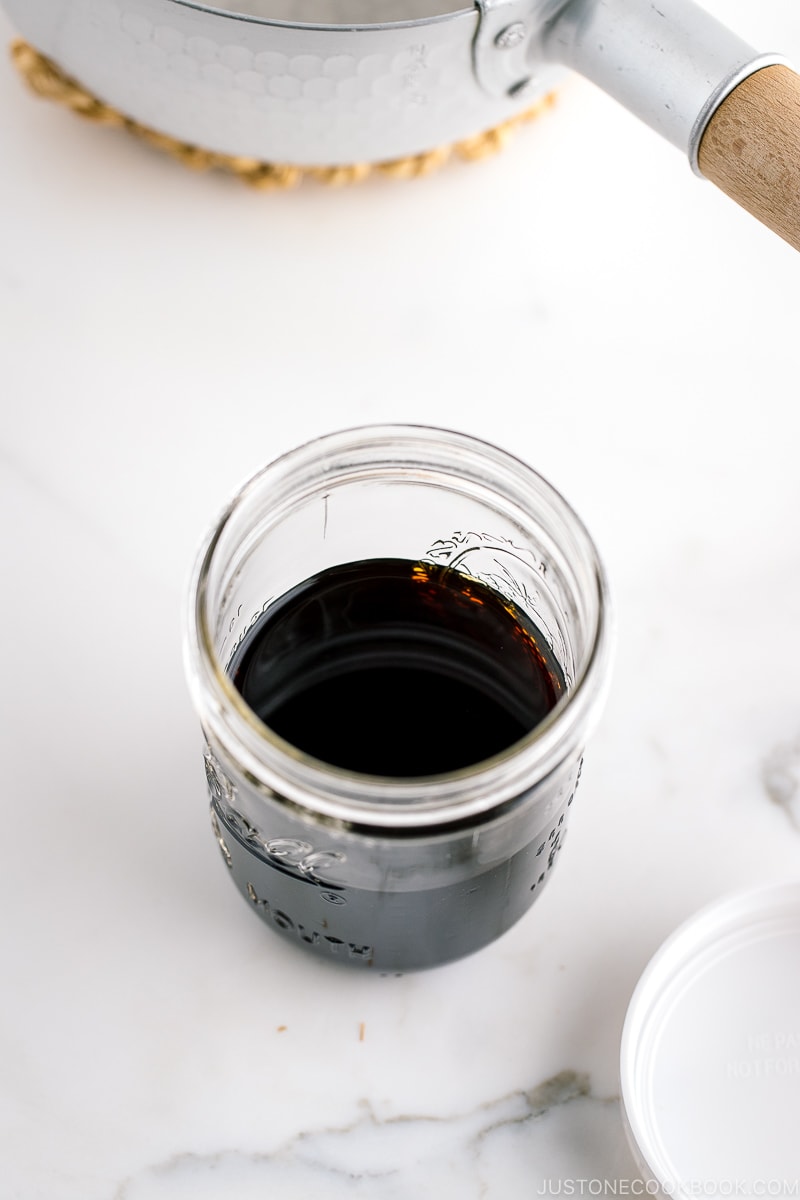
Mentsuyu (めんつゆ), or sometimes called Tsuyu (つゆ), is a Japanese soup base commonly used in soba and udon noodle dishes. Made from sake, mirin, soy sauce, kombu, and katsuobushi (dried bonito flakes), the flavor is delicate yet intensely savory.
Table of Contents
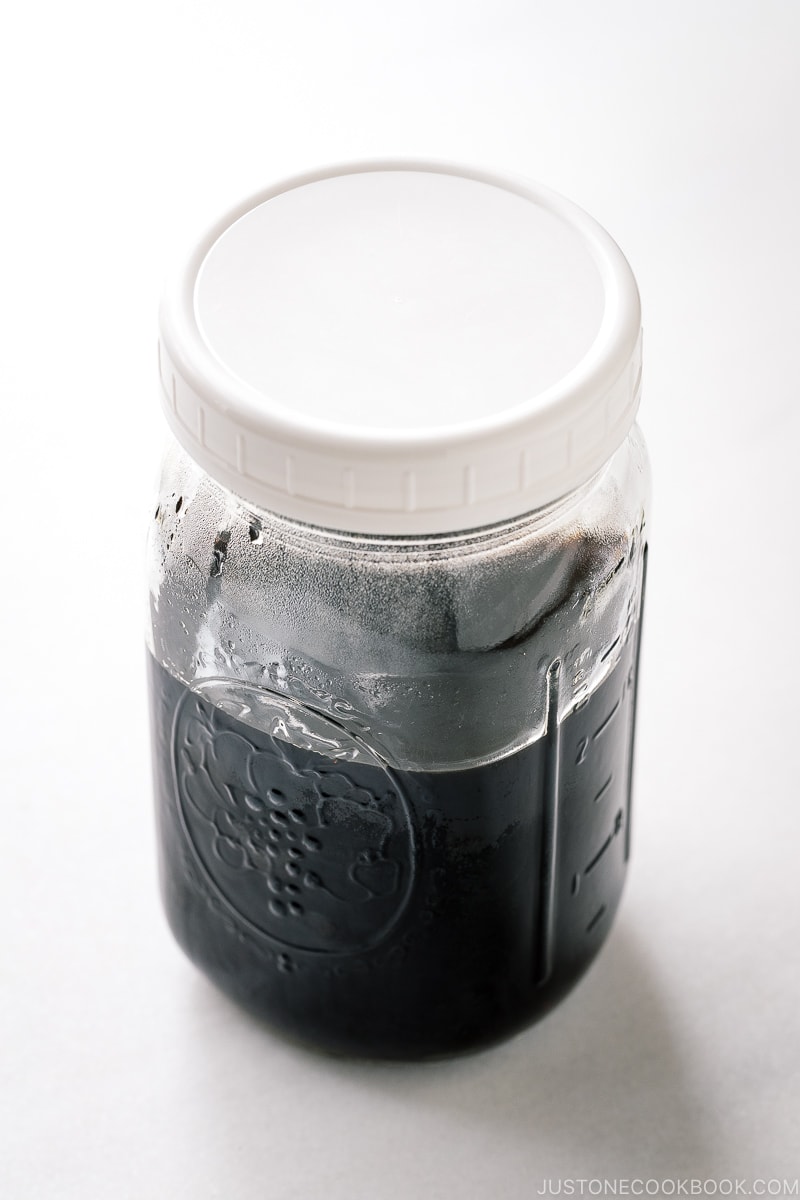
What is Mentsuyu (Tsuyu) for?
In Japan, we use Mentsuyu as a basic sauce or broth to flavor everything from noodle dishes, rice bowls, and hot pots to the tempura dipping sauce.
The multipurpose sauce gets a real depth of flavor and smokiness from the use of kombu and bonito flakes. As it happens, these two ingredients are the elementary components to make dashi—the Japanese soup stock that characterize the distinct flavor of Japanese food.
In this recipe, soy sauce contributes to the savory tones, and mirin imparts sweetness that ties everything together.
Making Mentsuyu at home is as easy as combining all the ingredients in a pot and letting it simmer down to a concentrated sauce. You can store it in a mason jar and keep it in the refrigerator for up to a month. The sauce will come in handy when you need it to season your favorite noodle dishes.
When ready to use, you just need to thin it out with water! The ratios of Mentsuyu to water will differ depending on the recipes.
Use Mentsuyu for Hot Noodle Soup

To use Mentsuyu in a hot noodle soup, dilute it with water, heat it up, then pour over boiled noodles. This hot noodle soup broth is called Kaketsuyu (かけつゆ).
Use Mentsuyu for Cold Noodle Dipping Sauce
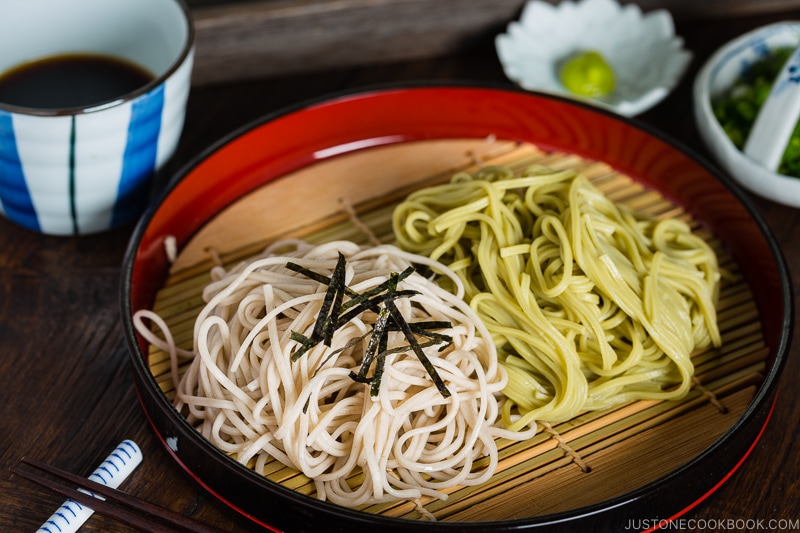
The Mentsuyu is diluted with water (sometimes no need to dilute), then serve with chilled noodles. This dipping sauce is called Tsuketsuyu (つけつゆ).
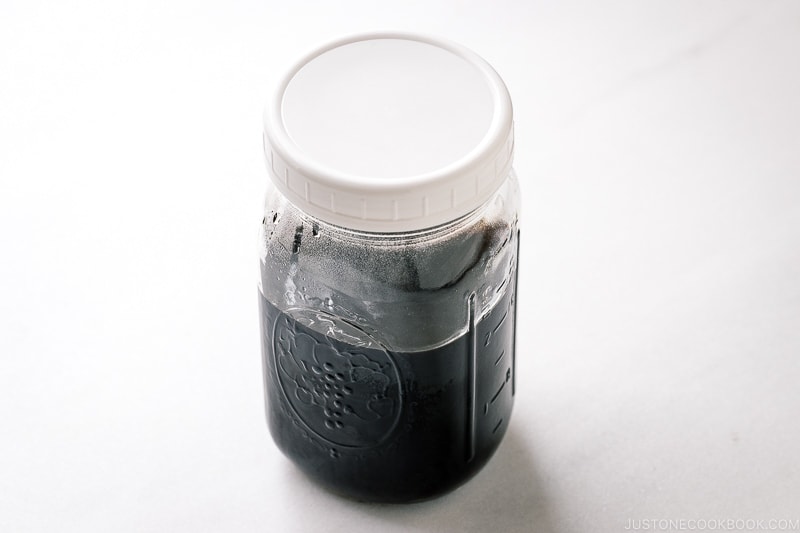
Convenient Store-Bought Mentsuyu Bottles
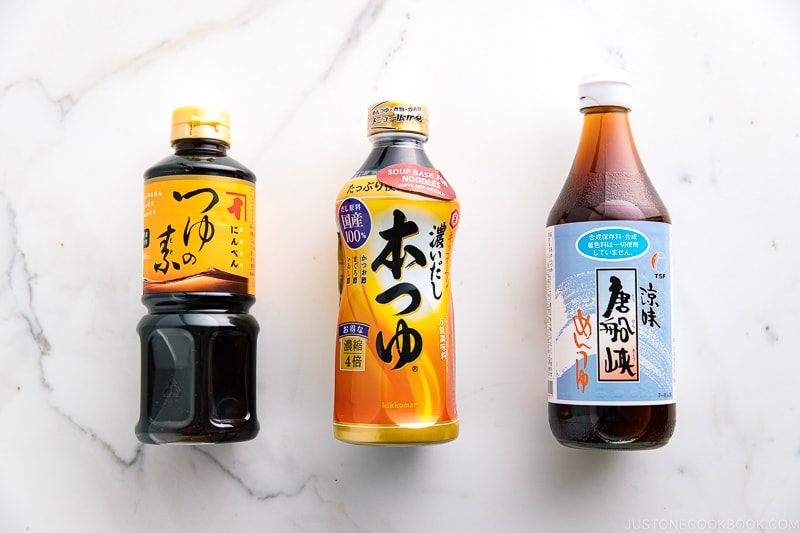
For convenience, you can purchase pre-made Mentsuyu from Japanese (or Asian) grocery stores or online.
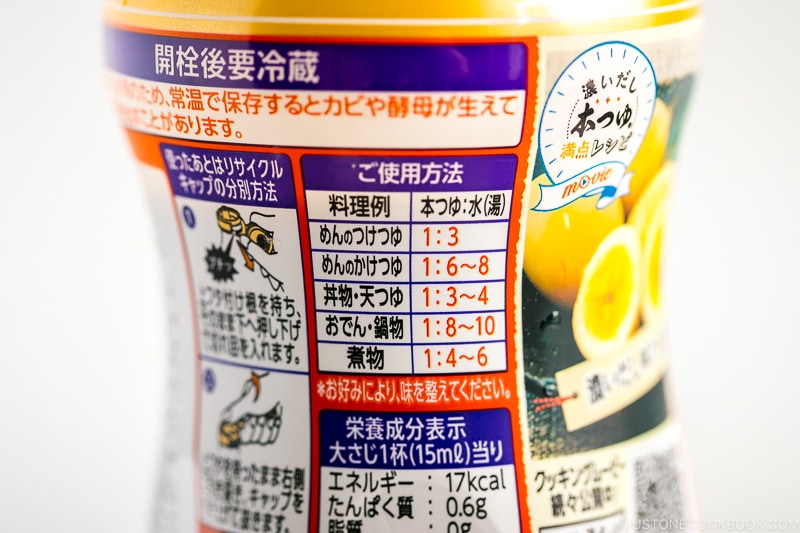
Each brand has different instructions for diluting the Metsuyu. Find the usage guide on the bottle that looks like this. You can learn more about the Ratio of Tsuyu to Water on this page.
Use Mentsuyu in These Recipes!
- Cold Tanuki Udon
- Tsukemen
- Zaru Soba
- Yaki Udon
- Mushroom and Tuna Japanese Style Pasta
- Hiyayakko (Japanese Cold Tofu)
- Kitsune Udon
- Negitoro & Avocado Donburi
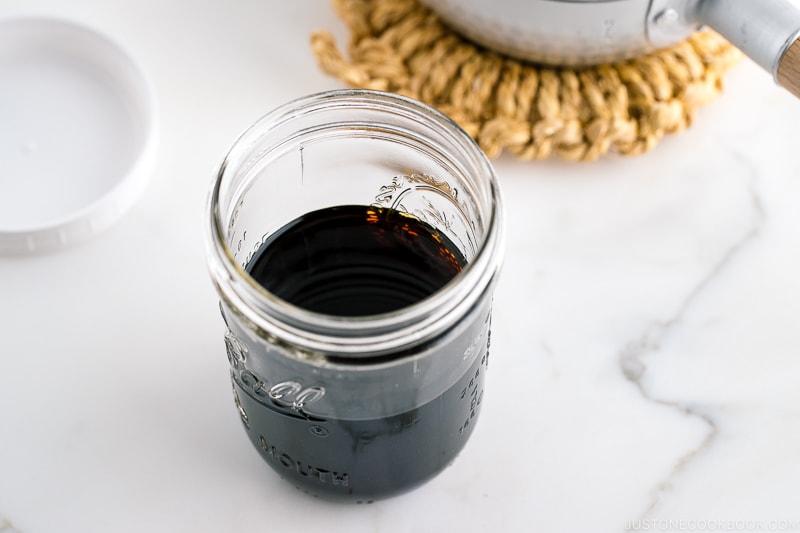
Wish to learn more about Japanese cooking? Sign up for our free newsletter to receive cooking tips & recipe updates! And stay in touch with me on Facebook, Pinterest, YouTube, and Instagram.
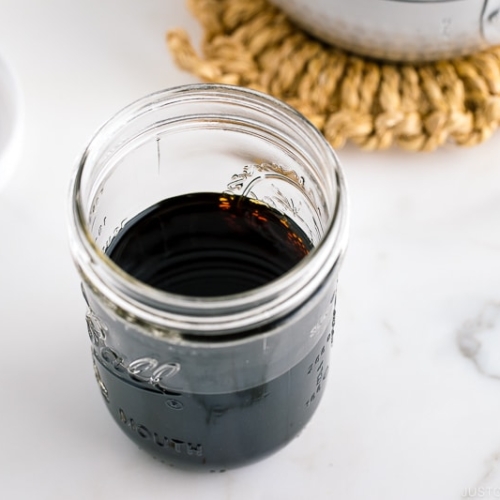
Homemade Mentsuyu (Japanese Noodle Soup Base)
Video
Ingredients
- ½ cup sake
- 1⅛ cup mirin
- 1 cup soy sauce
- 1 piece kombu (dried kelp) (5 g; 2 x 2 inches or 5 x 5 cm per piece)
- 1 cup katsuobushi (dried bonito flakes) (packed; omit for vegetarian/vegan or substitute 2 dried shiitake mushrooms)
Instructions
- Gather all the ingredients.

- In a saucepan, add ½ cup sake, 1⅛ cup mirin, and 1 cup soy sauce.

- Add 1 piece kombu (dried kelp) and 1 cup katsuobushi (dried bonito flakes).

- Slowly bring it to a boil over medium-low heat.

- Then, reduce the heat to low and simmer for 5 minutes. Then turn off the heat and let it cool.

- Pass the mixture through a fine-mesh sieve. Tip: Reserve the kombu and katsuobushi for another use (see below).

To Serve
- This Mentsuyu is concentrated. In general, the mentsuyu-to-water ratio should be 1:2 for a dipping sauce for cold Zaru Soba or Tanuki Udon and 1:4 for Udon Noodle Soup or Soba Noodle Soup. Please adjust the taste of your dipping sauce or soup broth by adding more mentsuyu or water.

To Store
- You can store the Mentsuyu in a mason jar in the refrigerator for up to a month.

To Repurpose the Spent Katsuobushi and Kombu
- Save the spent kombu and katsuobushi in an airtight container and store it in the refrigerator for a week or in the freezer for up to a month.

- Repurpose the spent katsuobushi and kombu to make Homemade Furikake (Rice Seasoning).

Nutrition
Editor’s Note: This post was originally published on July 16, 2013. It’s been republished on May 5, 2022, with updated step-by-step and final images.
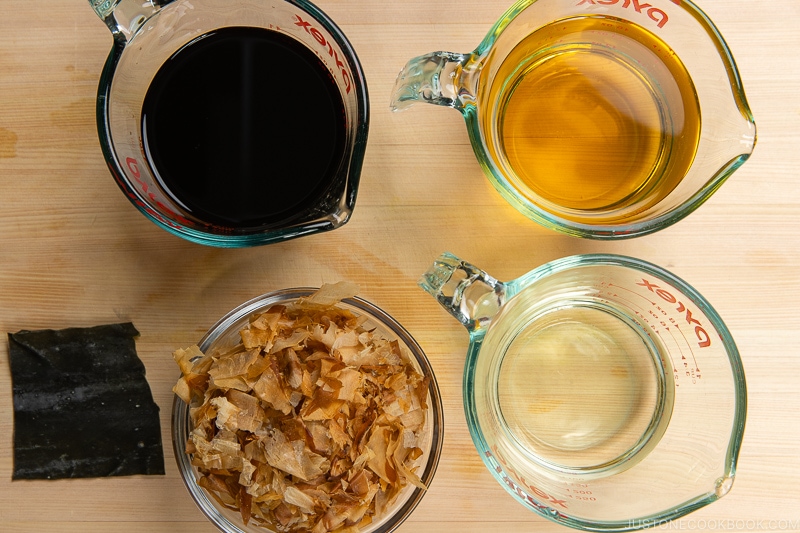
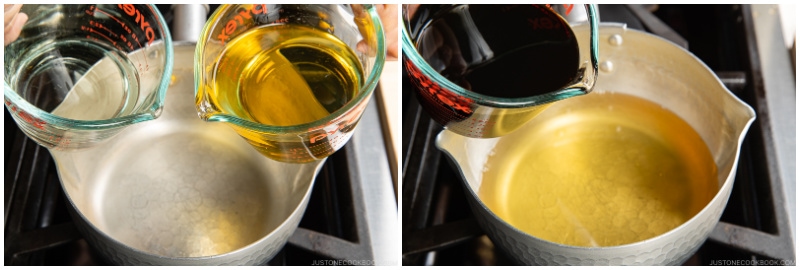
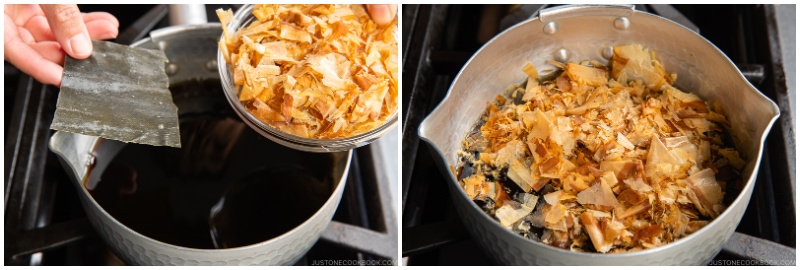
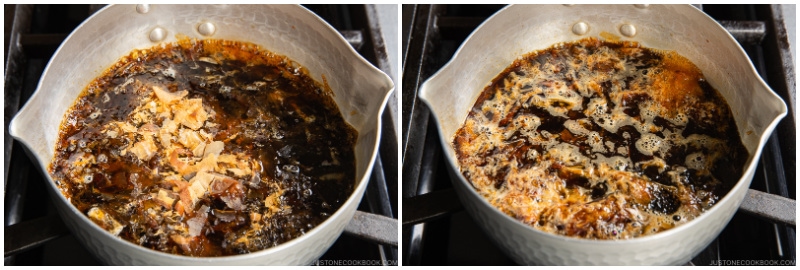
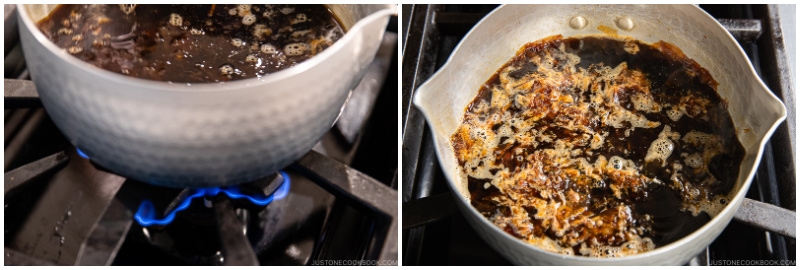
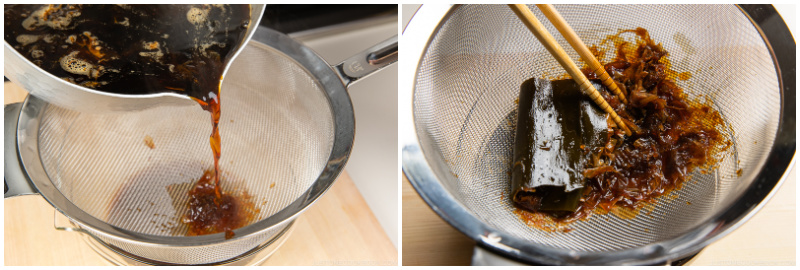
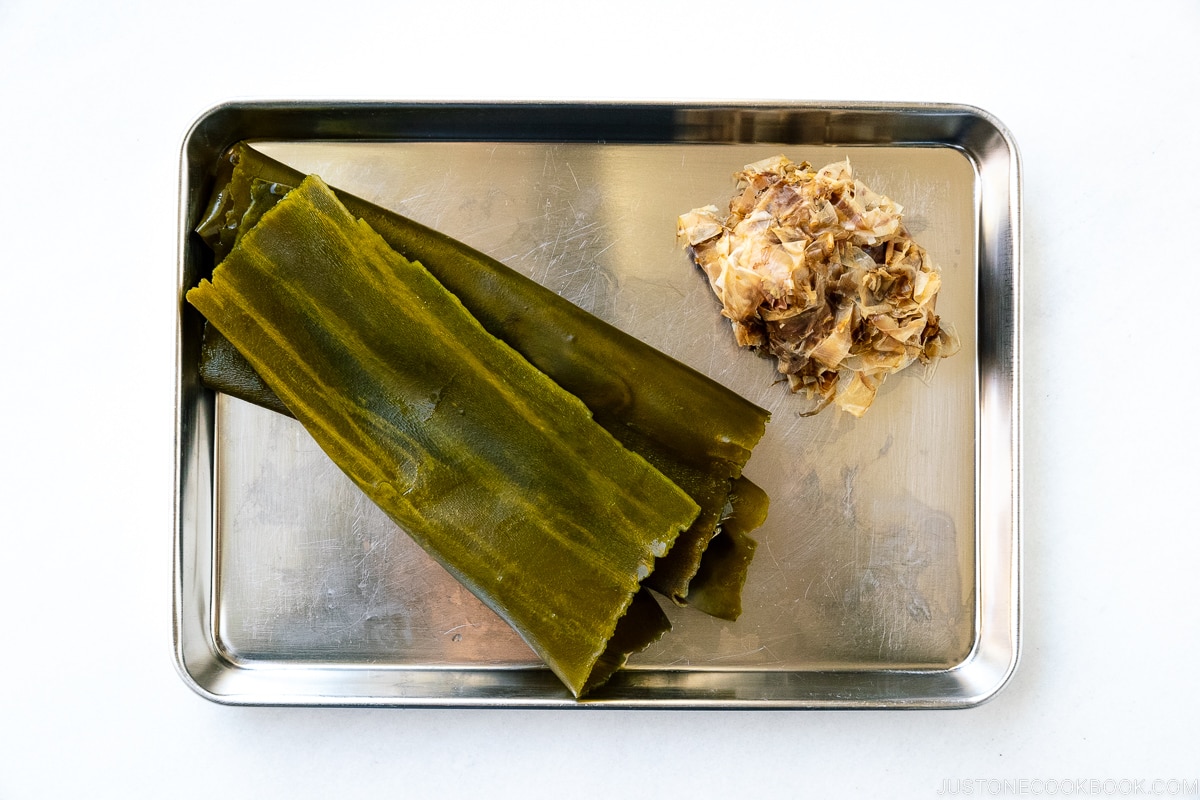
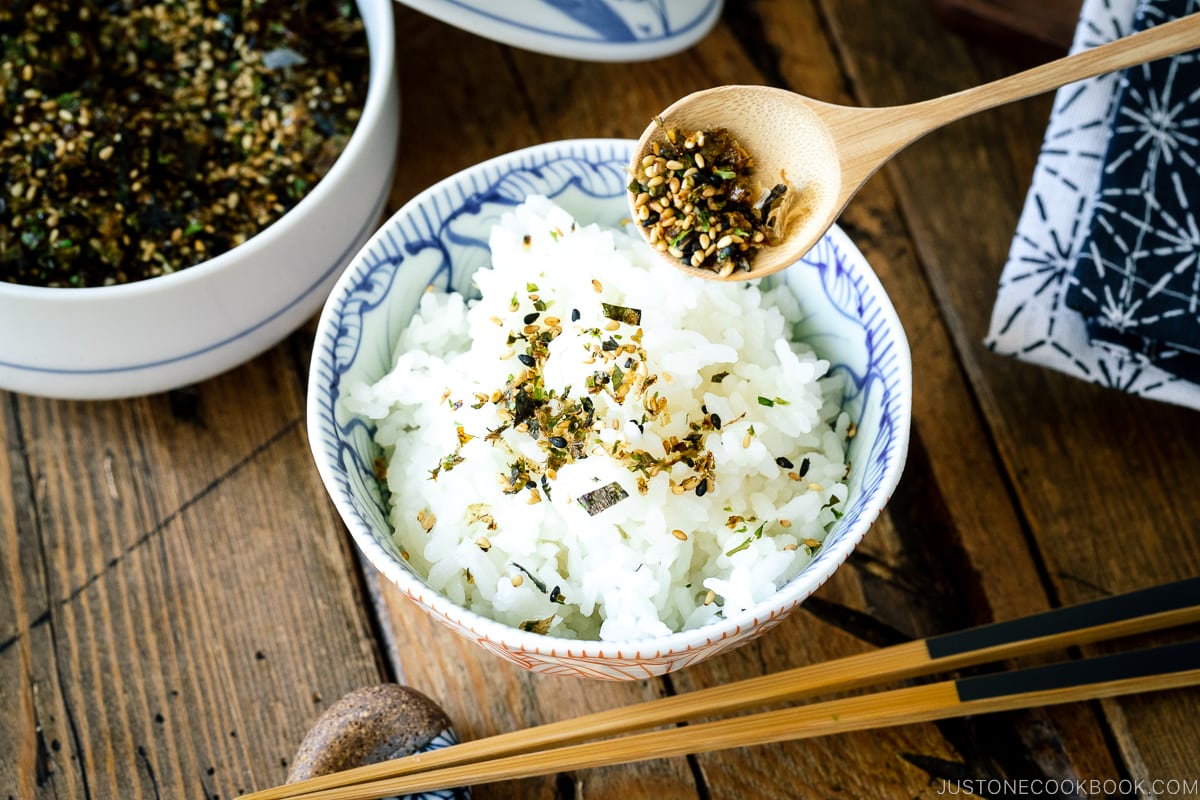










Thanks! I’ve always bought the bottles of this before but I’ll give this a whirl next time I run out.
Hi Christina! Homemade is really good. No “strange” ingredients for homemade! 🙂
This recipe (Mentsuyu) save my day. Thank you very much.
Hi Martha! Thank you for your kind feedback! I’m so happy to hear you liked this recipe! 🙂
Thank you for the mentsuyu recipe , it was oishiii desu
Hi Lia! I’m so happy you liked it! Thank you for your kind feedback! 🙂
You got me a bit confused with the bottle, which is actually labelled hontsuyu, I don’t know the difference though except that I think hon in that context means “real” as in hon-dashi. I’m guessing the meaning of mentsuyu is simply “noodle sauce” so they’re the same thing.
Hi Angelo! Each company has different names for their product for mentsuyu. Hon-dashi’s hon is not “real” dashi but it sounds very authoritative, but Hon Mirin’s hon actually means real (no other condiments) as opposed to Mirin like condiments like Honteri. It’s kind of complicated. They try to make it sound as authentic as possible. 😉 Mentsuyu = men (noodle) tsuyu (sauce), so that’s the actual food name, not product name.
Made this concentrate – wonderful taste! I already used some of it as a dipping sauce for your Zaru Soba and Shrimp/Veggie Tempura recipes. Can it be used for hot tempura udon soup? Can you recommend how to make this udon soup? (i.e. dilution ratio, additional ingredients)
Hi Sejal! I’m happy to hear you like this recipe! Yes, you can definitely use this for noodle soup. For a noodle soup base, you will likely dilute the concentrated with 4 or 5 parts water. So 1 part of mentsuyu to 4-5 parts of water. So if it’s 1 Tbsp. of mentsuyu then 4 Tbsp. of water = total of soup is 5 Tbsp… so you have to make it more like 1/4 cup of mentsuyu to 1 cup water. But please do adjust. It can be as diluted as 6-8 parts. 🙂
made this today. so tasty and more rich, flavorful and less salty than the bottled one. ratio 1 part mentsuyu to 3 parts water. will taste really good with tempura shrimp. thanks.
Hi Clara! Yay! I’m so happy to hear that. Yeah, we don’t want to get used to the salty bottled kind. I’m happy you tried this recipe. Thank you for your kind feedback! 🙂
This is so good! Awesome! Thank you very much, Nami!
Hi Debb! You’re very welcome! I’m happy to hear you liked it. 🙂
HI Nami,
We just returned from spending 3 weeks in Japan. The food was just amazing so now I am fired up to try and make some of the delicious food we sampled. So happy to find your web site! Your recipes look fabulous. I will start today with some noodles and dipping sauce! Thank you, Patty
Hi Patty! 3 weeks! How wonderful! I hope you had a great trip traveling in Japan. I’m heading there to spend the summer in less than 2 weeks. 🙂 Hope you can find some of the foods you enjoyed in Japan on my website. Welcome to my blog!
Hey Namiko,
Can this be used straight for Natto, or should it be diluted? I’m going to attempt to make Natto for a Japanese friend of mine. I think this may be the best sauce to accompany it. Let me know if you have other suggestions.
Thanks for all the recipes 🙂
~Craig
Hi Craig! Sure! It has nice dashi flavor in mentsuyu so it’s tasty! Wow how cool you’re making natto! This recipe is dilute version, so you don’t need to pour a lot. Hope you like this recipe and good luck with making natto! 🙂
Hello! Just wondering if you could recommend some sake brands available in US markets? I’d follow the cook-with-wine-you-would-drink rule but I’m not much of a drinker 🙂 I mostly buy wine/liqour to use for cooking/baking. Also, the fact that I can’t read Japanese makes it harder to choose! Thanks in advance and I hope you’re having a wonderful day.
P.S. I’ve seen some milky-looking sake before. Can it be used for cooking as well or is it solely for drinking?
Hi Cam! I mentioned 3 brands of sake in this post:
https://www.justonecookbook.com/pantry_items/sake/
They are under $10, and it’s “drinking” sake but not the expensive level of sake – which I don’t think is necessary for regular cooking. I don’t recommend using “cooking sake” as it’s not drinkable and has so much “other” stuff.
Don’t buy the milky one – it’s called Nigori-zake and it’s not for cooking. 🙂
If you cook a lot of Japanese foods, sake is inevitable. But if you don’t cook often, maybe buy one sake that you or other people can drink and use a few Tbsp. of sake for cooking? Good sake is around $25. These 3 brands I suggested are inexpensive sake and I don’t really like for drinking (I also don’t drink alcohol much and I only like smooth one). 🙂
Hope this helps!
Can I use dashi powder instead of kombu and katsuobushi? If I can, how many tsp or tbsp should I put in?
Hi Minh! Sure! Although it’s not as good as making from scratch, but it’s convenient and tastes good enough. 🙂
This soup base is concentrated, so maybe start with 2 tsp. or 3 tsp (= 1 tbsp)?
Hi Nami,
What would be your opinion on using light soy for Mentsuyu? obviously the amount would need to be changed due to the difference in salt content but I was just curious since i know light soy is popular choice for flavouring soup stock without adding a strong soy colour. D0 y0u ever prefer using light soy and if so what recipes do you prefer using it in?
Thank you!
Hi Laura! Yes, you can use light color soy sauce (usukuchi shoyu) and it’s commonly used in west of Japan (Kyoto, Osaka etc). I am from east of Japan where regular soy sauce is more commonly used. Light color soy sauce is preferred in west to preserve the clear color of dashi for soup and noodle soup. While in Tokyo the soup color is much darker… So it’s really up to you. Just make sure to adjust the salt content because light color soy sauce is a bit saltier. 🙂
Ah that’s very interesting, I did notice a difference in soup broth between Kansai and Kanto, dark soy really has a stronger flavor.
I’ve always used dark soy but I’m definitely interested in giving light soy a try.
Thanks Nami
You might enjoy the light color soy sauce. Remember light color soy sauce (usukuchi shoyu) has more salt content. 🙂
Hi Nami,
I can’t kombu anywhere in my city (and I have looked!) so I can’t make my own Mentsuyu sauce. I did find a bottle of Memmi soup base, can I use that instead?
Hi Minh! Menmi is Mentsuyu (it’s the brand’s name for mentsuyu). You’re all set. 🙂
Would you add sake in this recipe if you were feeding it to your kids? I’ve heard that alcohol cooks off in recipes, but I’m always unsure how much is okay.
Hi S. Wong! Yes, alcohol evaporats with or without cooking. When you cook, alcohol is pretty much gone, but adds umami to the sauce. We use sake and mirin in our cooking, but most of the time is small amount (in the sauce etc). You reduce the sauce for a long time so there will be no alcohol left. I’ve researched on this topic in Japanese before just to make sure, but you can probably find information about it in English as well. Hope this helps! 🙂
Hi Nami,
I am attempting to cook my 15month old son some soba soup and am considering buying the ready-made mentsuyu in stores. I would like to find out:
1) Does the mentsuyu contain any trace of broad beans? My son is allergic to them
2) Should the sauce be “extra diluted” to ensure there’s not much alcohol in them just to be sure?
Did you feed your kids these soup base at such a young age?
Thank you for all your posts!
Hi Gin! Here are my answers:
1) Fava beans shouldn’t be included but please check the label. If it’s written in Japanese only, you could send me a photo and I’ll check for you. But I can’t take any responsibility…
2) I don’t think it matters that much. I never thought “straight” (no need to dilute) includes less alcohol…. Alcohol should be evaporated after cooking.
3) My concern was the amount of salt in those bottles. I was careful not to give salty food (kids will get used to it…) and preservatives, so it’s good to make your own (so you can control the amount of saltiness).
Hope this helps! 🙂
Thanks Nami! Yes, making my own soupbase is probably best. Was trying to take the easier way out since I may not be able to obtain all the ingredients where I live..
Hi Gin! I understand – maybe dilute as much as possible for your 15 mo? 🙂
Nami, If I don’t have kombo and katsuobushi, can’t I use dashi broth? I thought I saw this on your website a while ago, but I can’t find it anywhere. I’m trying to make your recipe for cold soba noodles and the dipping sauce mentions dashi but doesn’t say how much of the broth to use.
Hi Bob! I’m terribly sorry that I didn’t realize your comment till now. I apologize for my late response.
The reason why I used kombu + katsuobushi here instead of dashi broth is that we just need the strong flavor of kombu and katsuobushi, but don’t need the liquid (water). Mentsuyu is concentrated, and depending on your use, you dilute.
If you are going to eat cold soba (zaru soba), you usually pour mentsuyu and dilute with iced water to get the right saltiness. I can’t say how much as some Mentsuyu is “straight” (which means no water needed), some Mentsuyu requires to dilute 2 times or 3 times… I don’t know why Japanese companies do this… so you have to dilute as you like. Hope I’m making sense. You can use cold dashi broth too, but water is typically used. 🙂
Please let me know if I didn’t answer to your question. 🙂